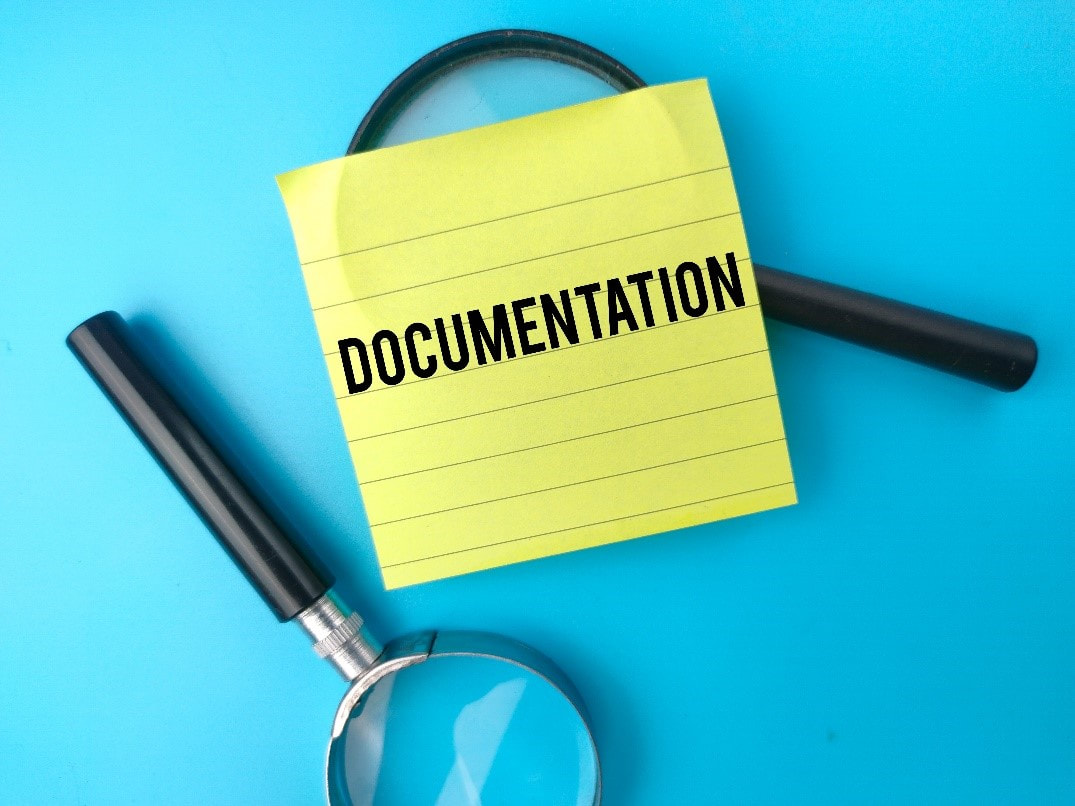|
Regulations are used to safeguard and enhance the lives of businesses, individuals as well as the environment, and to help boost economic growth. In order to fully protect everyone’s interest within certain organization, regulations must be updated from time to time if there’s a need. Medical billing may indirectly impact the healthcare industry, but it is important to maintain order and organization in the industry.
To become an effective biller, one must understand the different billing regulations, private and public insurance plan policies. Here are new billing regulations for 2022 every biller as well as customers must be aware of. 1. No Surprises Act Comes into Effect on January 01, 2022 Beginning January 1, 2022, midwives and other health care providers will be required by law to give uninsured and self-pay patients a good faith estimate of costs for services that they offer, when scheduling care or when the patient requests an estimate. This new requirement was finalized in regulations issued October 7, 2021. The regulations implement part of the “No Surprises Act,” enacted in December 2020 as part of a broad package of COVID- and spending-related legislation. The act aims to reduce the likelihood that patients may receive a “surprise” medical bill by requiring that providers inform patients of an expected charge for a service before the service is provided. The government will also soon issue regulations requiring midwives and other healthcare professionals to give good faith estimates to commercial or government insurers, when the patient has insurance and plans to use it. Midwives working in group practices or larger organizational settings and facilities will likely receive direction from their compliance department or lawyers on how to satisfy this new requirement. Its implementation means that patients can no longer be held accountable for emergency services from out-of-network providers or out-of-network hospital services (including ambulance services and emergency room physicians). It also implies that patients should not be liable for ‘balance billing’ by an in-network healthcare facility for services received from out-of-network providers (such as radiologists, anesthesiologists, pathologists, or neonatologists). 2. CMS Announces Lower Medicare PFS conversion factor The CY 2022 conversion factor will be $33.59, a decrease of $1.30 over the CY 2021 conversion factor. But it’s not just this cut that will impact medical practice revenues in 2022. It’s estimated that the combined effect of the PFS cuts since 2021, as well as the 4 percent Statutory Pay-As-You-Go (PAYGO) cut and the 2 percent cut for Medicare sequestration, will lower medical practice revenues by 10 percent. 3. Modifications in POS codes for Telehealth The point of service (POS) codes for telehealth will see two main changes. POS 02 has been revised for cases when the telehealth consult occurs outside the patient’s home. POS 10 has been introduced to cover telehealth consults while the patient is home. 4. Split (or Shared) E/M Visits CMS has stipulated that in 2022 the provider who handles the substantial portion of the visit (which could be on any of the three components – the time spent on history, exam, or medical decision making), or more than half of the total time spent, would bill for the visit. 5. Direct Billing of Physician Assistant (PA) Services Beginning January 01, 2022, PAs can bill Medicare directly for their services and reassign payment for their services. Currently, payments for services delivered by PAs are made by Medicare to their employers. These are just a handful of medical coding and billing changes you can expect in the coming year. Keeping track of these changes and training your staff will be crucial to ensuring that your medical practice revenues don’t dip in 2022. If you’re wondering how you’ll stay on top of these medical billing changes in your medical practice, now is an excellent time to partner with an experienced medical billing service. References American Psychological Association. (2021, December 10). New billing disclosure requirements take effect in 2022. https://www.apaservices.org. Retrieved September 27, 2022, from https://www.apaservices.org/practice/legal/managed/billing-disclosure-requirements Blog, P. F. (2021, December 27). 5 top medical billing changes in 2022. Medical billing and collections as low as 1.99%. Retrieved September 27, 2022, from https://practiceforces.com/blog/medical-billing-changes-in-2022/ Audits can be a painful part of the daily practice routine even for the best chiropractic teams. An oversight or omission could lead to massive fines and penalties that could have a significant impact on your business. Additionally, all claims your business submits are subject to rigorous prepayment reviews or post-payment audits.
Protecting yourself requires ensuring the best practices and looking at things from the other viewpoint. Here are some suggestions that can make a significant difference. 1. Know How Auditors Operate Audit provides the framework to improve the quality of patient care in a collaborative and systematic way. Through Audit we can identify emerging trends, which enables us to identify risks and implement actions before it becomes a bigger issue. If you know how auditors operate, you will know the key aspects where to improve your billing practices. Ensure to learn from audits and review data thoroughly. Scrutinize data to ensure gaining all that you can from it and move forward making the necessary changes to support best practice Using this document is your way of seeing inside the audit process and knowing which practice areas are scrutinized. You’ll then be better equipped to ensure that your documentation makes the grade. You can also review the Medicare Program Integrity Manual for more insight into how auditors work. 2. Always Prepare Accurate Documentation Accuracy encompasses all forms of information oversight: patient identification, amendments and corrections to records, validation of author, plus auditing for document validity before sending out as part of a claim for payment. Knowing that multiple systems will probably be involved in an audit, all data should be documented, including meaningful use, reports generated by the practice’s EHR system, and other evidence supporting medical decisions. Procedures that are more likely to be scrutinized are sleep studies, outpatient physical therapy and MRI’s, which the Office of Inspector General (OIG) believes may be overused and are among the OIG/RAC targets requiring careful documentation. 3. Review Key Qualifiers Every claim should clear internal quality checks before submission. Be sure the service you provided to the patient:
4. Use Correct Midwifery Billing Software The right computer program can catch errors that are the result of human error. In addition, there is a plethora of available software that practices can use to streamline their documentation and reduce audit risks across the board. Many of these solutions are cloud-based, which is a great advantage. It means you’re always running the most up-to-date software to help keep your compliance current and that your valuable documentation data is being continuously backed up off-site. 5. Review Audit Risk to Lower Reimbursement As more prepayment and health plan audits emerge in the healthcare landscape, hospitals can use them as new opportunities for cost savings in audit management, record request responsiveness, and health plan collaboration. Many providers have found some principles ways to use audit storms to strengthen operational processes and mitigate reimbursement losses. 6. Plan for the Worst-case Scenario As the saying goes, “prepare for the worst and hope for the best.” Most audits are triggered due to a history of non-compliance or related past problems; however, more practices are being randomly audited, even with no apparent violations or errors. 7. Be proactive Hope alone will not prevent an audit nor ensure that your practice passes one. If your practice is audited at random, having all of your documentation complete, accurate and fully compliant is the only way to be confident that your practice won’t be caught off guard and that if audited, the results will be favorable. 8. Experienced Medical Billing Service Provider Part of Your Team As Midwives, your biggest priority is caring for your clients, and getting you compensated for your hard work is ours. Midwives need every advantage when navigating the complex world of insurance claims. Our role during this process is to connect your practice and insurance seamlessly. We act as the back office that manages administrative duties so that you can focus on your passions, mamas, and their babies. We provide straightforward, affordable solutions that streamline the insurance process and get you paid. Our office employs certified coders, medical compliance officers, and practice management professionals to implement protocols that bring you the most valuable payout. We are certified in HIPAA requirements, ethics, and practice management so you can entrust us with your clients' information References Documentation tips that reduce audit risks. ChiroHealthUSA. (n.d.). Retrieved September 28, 2022, from https://www.chirohealthusa.com/member-providers/documentation-tips-that-reduce-audit-risks/ 5 documentation tips to reduce RAC audit risk. Coronis. (n.d.). Retrieved September 28, 2022, from https://www.coronishealth.com/blog/5-documentation-tips-to-reduce-rac-audit-risk/ Referral in the most basic understanding is a written order from the primary care specialist to see another specialist and get the patient certain medical services. In many Health Maintenance Organizations (HMOs), the patients need to get a referral before they can get medical care from anyone except their primary care doctor. If they don’t get a referral first, the plan may not pay for your services. Referrals are required by some insurance providers to ensure that the patient will receive accurate service from the right people.
Patient referral is a common and important medical practice. Sometimes, a patient’s condition is outside a physician’s area of expertise, and the physician needs to refer the patient to a specialist who is more knowledgeable about or experienced in treating the condition. In the United States, for example, doctors refer one in every three patients to a specialist each year. Every referral is meant to ensure the best outcome for the patient. How to Get a Physician Referral Historically, physicians have known that in reporting a consultation service, the three R’s must be documented: Request, Render, and Report. Starting in 2006, CPT requirements have included one more R requirement: a Reason. There must be a request for consulting services from another physician or health care provider, the suspected or known diagnosis requires determination by a specialist who renders his / her opinion, the referring physician and consultant specifies a reason for the consultation, the treatment is undetermined or may be known, and a written report to the requesting physician or referring source reiterating the reason for consultation plus the findings and opinions must be forwarded by the consultant. In most cases, a consultation is a one – time visit. A New Patient Referral usually has an identified problem which requires a specialist to provide care, and does not require that a written report be sent to the requesting physician or health care provider. The policy changes or clarifications also state that a transfer of care occurs when a physician requests another doctor to assume the care of the patient. Ongoing management of the patient by the consultant physician cannot be reported using a consultation service code. Therefore, a referral for evaluation and management (E/M) cannot be considered a consultation because there has been a transfer of care. There also has been concern regarding language that the consulting physician must document the request and reason for the consultation in the patient’s medical record. Without that documentation, the CPT code for a consultation could not be used. However, according to the E/M documentation guidelines, the consulting physician is not required to confirm that the requesting physician documents his / her request. The documentation criteria for a consultation service requires that the requesting physician and consulting physician both document the request for consultation in their medical records, but each physician is required to keep their own accurate records and code accordingly. In the revised Medicare Claims Processing Manual, the section which discusses consultation followed by treatment, there are also rules governing those occasions when it may be necessary for the consulting physician to assume ongoing care of the patient. It should be emphasized that the above guidelines differentiating a Consultation from a New Patient Referral apply primarily to Medicare patients. Currently it appears that non – Medicare payers have not yet implemented these regulations. Understanding each of these processes and how to determine what is required by the insurance is key to avoiding lost revenue and negatively impacting patients financially. Having knowledgeable support staff in the area of preservice is crucial to any organization. The return on investment in insurance reimbursement and patient experience alone is worth the cost of having this expertise at your institution. References and Useful Links Lori. (n.d.). New Patient Consultation and new patient referral – what is the difference. Medicare Payment, Reimbursement, CPT code, ICD, Denial Guidelines. Retrieved August 6, 2022, from https://medicarepaymentandreimbursement.com/2010/10/new-patient-consultation-and-new.html PatientPop. (2022, April 20). When and how to refer patients to a fellow physician. PatientPop. Retrieved August 6, 2022, from https://www.patientpop.com/blog/physician-to-physician-referrals-reducing-liability-and-improving-patient-care/ The Center of Medicaid and Medicare Services (CMS) form 1500 must be used to bill SFHP for medical services. The form is used by Physicians and Allied Health Professionals to submit claims for medical services. All items must be completed unless otherwise noted in these instructions. A CMS 1500 with field descriptions and instructions is included in the link below: https://www.sfhp.org/wp-content/files/providers/forms/Instructions_for_CMS_1500_Claim_Form.pdf Billing plays a vital role to keep your business running. It determines your capacity as a business owner to make your cash flow intact avoiding the business to collapse. While you continue to create greater impact, your business will continue to prosper if you know how to manage your finances carefully. From record keeping, cash in and cash out, invoice, giving statement and collection, billing takes place. It requires enough expertise to keep tracking all of these because inaccurate billing can cause serious problems. In the absence of accurate and reliable billing, major distractions to expected liquidity can ruin reinvestment plans, and in extreme cases put operations at risk.
Owning and billing for your own midwifery practice helps you and your practice in numerous ways. It gives you the opportunity to offer outstanding midwifery care, exactly how you envisioned your practice to be. It provides you the freedom and flexibility to manage your finances and cash flow. However, like most of us desire to simply manage the in and out of our practices’ revenue and profitability, reality hits that this is beyond what we envisioned. In reality, it is not easy to crawl down tracking all the records, keeping all the collections, updating codes and description, managing finances, and all other aspects that are involved in billing and coding. Not to mention you being busy as the expert of your own practice, your business will cripple if you can’t manage these factors properly. Time will surely come that you will question yourself how you may be able to get out of that duty. To prevent that from happening, you should know how to assess your business’ needs. Are you capable of doing billing tasks on your own? Or is it time to ask for help from the experts? Here’s what you need to do to assess your practice further. Assess Your Practice To find out what the best choice is for your business, ask yourself these questions about your billing process, staff, physical space, and plans for the future:
Assessing your own practice by answering this set of questions will help you understand the needs of your practice. If you answered YES to most of the questions, then outsourcing will be good for you. Outsourcing by means of hiring medical billers and bringing in their expertise to your practice. However, if you answered NO to most of the questions stated, then keeping your billing operations within your practice is the best choice for you. There are a lot of great benefits if you choose to hire an expert biller like Midwives Advantage but choosing to keep your billing procedures in-house is not a bad idea either. You have to simply weigh the needs of your practice. Reference To hire or not to hire billing service. (n.d.). Retrieved August 5, 2022, from https://www.kareo.com/documents/to-hire-or-not-to-hire-billing-service.pdf |
Archives
August 2023
Categories
All
|




 RSS Feed
RSS Feed